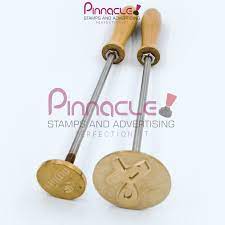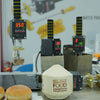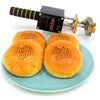The Art and Science of Heat Stamping: A Timeless Technique in Modern Manufacturing

Introduction:
In the realm of manufacturing, where precision and personalization are paramount, few techniques hold the same allure and significance as heat stamping. This age-old process, rooted in both artistry and engineering, imbues products with distinction, durability, and a touch of timeless elegance. From luxury goods to industrial components, heat stamping leaves its mark, quite literally, on the products we encounter daily. In this article, we delve into the fascinating world of heat stamps, exploring its history, mechanics, applications, and enduring relevance in contemporary manufacturing.
The Origins of Heat Stamping:
The origins of heat stamping can be traced back centuries, to ancient civilizations where craftsmen employed rudimentary tools to brand or decorate objects made from metal, leather, and wood. Over time, this primitive practice evolved into a more sophisticated technique, as artisans experimented with different heating sources and materials to achieve desired results.
One of the earliest documented instances of heat stamping dates back to the Han Dynasty in China, where craftsmen used metal stamps heated over charcoal fires to imprint intricate designs onto pottery and other artifacts. Similarly, in ancient Rome, metalworkers utilized heated branding irons to mark their creations, a practice that persisted through the Middle Ages and into the Renaissance.
The Industrial Revolution marked a turning point for heat stamping, as advances in metallurgy and manufacturing processes enabled greater precision and efficiency. Steam-powered presses and electric heating elements replaced manual methods, allowing for mass production and standardized branding across various industries.
The Mechanics of Heat Stamping:
At its core, heat stamping relies on the application of heat and pressure to transfer a design or inscription onto a substrate. The process typically involves three main components: the stamping die, the heating element, and the substrate.
The stamping die, often made from metal or silicone, contains the desired design or text in raised relief. It serves as the template for transferring the image onto the substrate.
The heating element, which can take the form of an electric heater, hot plate, or open flame, is used to heat the stamping die to the optimal temperature for impression. The temperature requirements vary depending on the type of substrate and stamping material used.
The substrate, or the material being stamped, can range from leather and fabric to plastic, paper, and metal. Each substrate requires specific heat and pressure settings to ensure a clear and durable impression.
The stamping process begins with heating the stamping die to the desired temperature, typically controlled by a thermostat or temperature regulator. Once heated, the die is brought into contact with the substrate under controlled pressure, causing the design to transfer onto the surface.
Applications of Heat Stamping:
Heat stamping finds application across a diverse range of industries, from fashion and accessories to automotive, electronics, and packaging. Some common uses of heat stamping include:
- Luxury Goods: High-end fashion brands often use heat stamping to embellish leather goods, such as handbags, wallets, and shoes, with logos, monograms, or decorative patterns. The precision and permanence of heat-stamped designs add value and exclusivity to these products.
- Product Branding: Heat stamping is widely employed for branding and labeling products in various industries, including cosmetics, electronics, and consumer goods. From logo placement on electronic devices to product identification tags on clothing and accessories, heat stamping offers a durable and aesthetically pleasing solution for customization and branding.
- Automotive Interiors: In the automotive industry, heat stamping is utilized to add decorative elements and branding to interior components, such as dashboard panels, steering wheels, and upholstery. The ability to customize designs and textures enhances the overall aesthetic appeal of vehicles while maintaining durability and longevity.
- Packaging and Printing: Heat stamping plays a crucial role in the packaging and printing industry, where it is used to create eye-catching designs, labels, and security features on packaging materials, labels, and promotional items. The versatility of heat stamping allows for intricate detailing and customization, making it a preferred choice for premium packaging and marketing materials.
The Future of Heat Stamping:
As manufacturing technologies continue to evolve, so too does the art and science of heat stamping. Advances in materials science, automation, and digital imaging are shaping the future of this time-honored technique, offering new possibilities for customization, efficiency, and sustainability.
Digital heat stamping systems equipped with computer-controlled actuators and imaging software enable precise replication of intricate designs with minimal setup time and waste. This digitalization of heat stamping not only enhances productivity and accuracy but also opens up opportunities for on-demand customization and personalization, catering to the growing demand for bespoke products in the marketplace.
Furthermore, the development of eco-friendly heat stamping materials and processes, such as solvent-free inks and recyclable substrates, aligns with the industry's increasing focus on sustainability and environmental stewardship. By reducing the environmental impact of heat stamping operations, manufacturers can meet consumer expectations for green practices while maintaining product quality and performance.
In conclusion, heat stamping remains an indispensable technique in modern manufacturing, combining tradition with innovation to create distinctive and enduring products. From its ancient origins to its contemporary applications, heat stamping exemplifies the marriage of artistry and engineering, leaving an indelible mark on the products we cherish and the industries we serve. As technology advances and consumer preferences evolve, the legacy of heat stamping continues to evolve, ensuring its place as a timeless and indispensable tool in the manufacturing arsenal.





